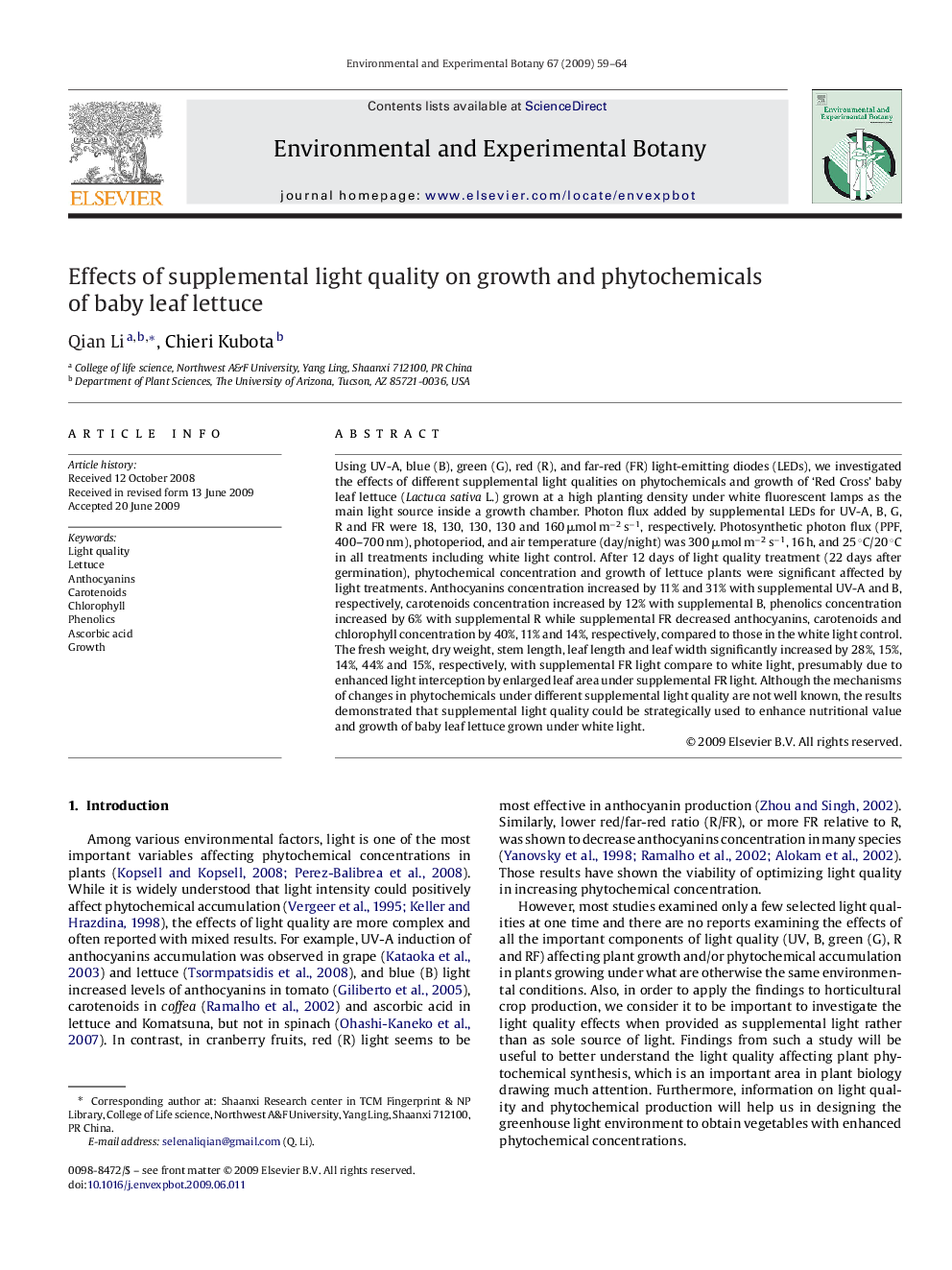| Article ID | Journal | Published Year | Pages | File Type |
|---|---|---|---|---|
| 4555032 | Environmental and Experimental Botany | 2009 | 6 Pages |
Using UV-A, blue (B), green (G), red (R), and far-red (FR) light-emitting diodes (LEDs), we investigated the effects of different supplemental light qualities on phytochemicals and growth of ‘Red Cross’ baby leaf lettuce (Lactuca sativa L.) grown at a high planting density under white fluorescent lamps as the main light source inside a growth chamber. Photon flux added by supplemental LEDs for UV-A, B, G, R and FR were 18, 130, 130, 130 and 160 μmol m−2 s−1, respectively. Photosynthetic photon flux (PPF, 400–700 nm), photoperiod, and air temperature (day/night) was 300 μmol m−2 s−1, 16 h, and 25 °C/20 °C in all treatments including white light control. After 12 days of light quality treatment (22 days after germination), phytochemical concentration and growth of lettuce plants were significant affected by light treatments. Anthocyanins concentration increased by 11% and 31% with supplemental UV-A and B, respectively, carotenoids concentration increased by 12% with supplemental B, phenolics concentration increased by 6% with supplemental R while supplemental FR decreased anthocyanins, carotenoids and chlorophyll concentration by 40%, 11% and 14%, respectively, compared to those in the white light control. The fresh weight, dry weight, stem length, leaf length and leaf width significantly increased by 28%, 15%, 14%, 44% and 15%, respectively, with supplemental FR light compare to white light, presumably due to enhanced light interception by enlarged leaf area under supplemental FR light. Although the mechanisms of changes in phytochemicals under different supplemental light quality are not well known, the results demonstrated that supplemental light quality could be strategically used to enhance nutritional value and growth of baby leaf lettuce grown under white light.
